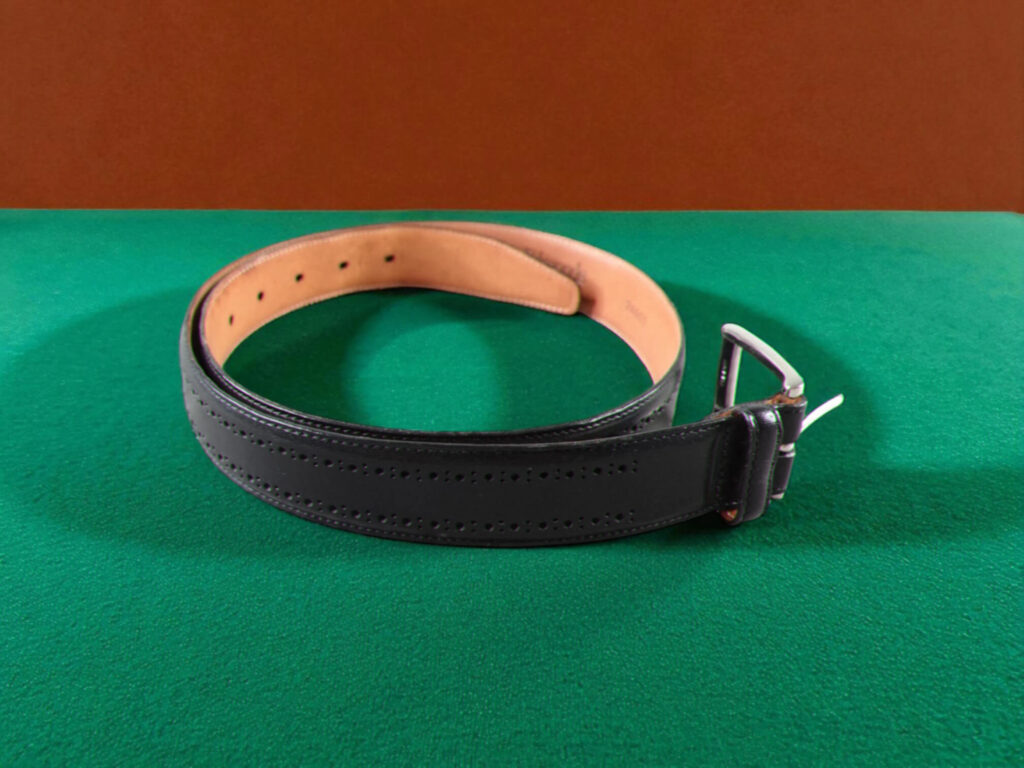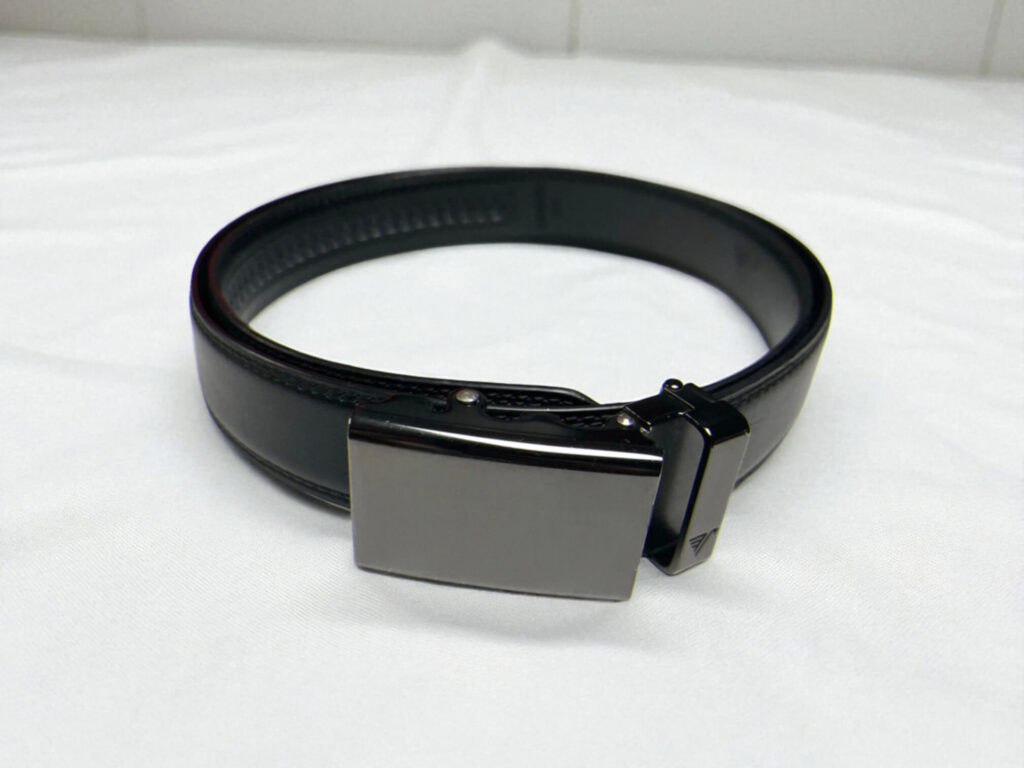Best Dress Belts for Men in 2025
A suit without a proper dress belt feels unfinished. It’s one of those small details that can either sharpen your look or quietly ruin it. In 2025, men have more options than ever—classic leather, reversible belts, no-hole designs, even eco-friendly versions. But here’s the problem: most guys still struggle with picking the right one.
This guide will walk you through exactly what makes a great dress belt, the best dress belts available this year, and show you how to choose the right one for your style. By the time you’re done, you won’t need to Google another belt question again.
Contents
📦 Found This Gem Today
JUKMO Reversible Ratchet Belt – Finally, One Belt That Does It All
Tired of belts that never fit quite right? This clever ratchet system clicks into the perfect spot every time. Plus it's reversible – so you're basically getting two belts for the price of one.
⭐ 4.7/5 stars – 60+ happy customers
Just $19.98 (seriously good deal)
👉 Check It OutWhat Makes a Great Men’s Dress Belt?
Not every belt hanging on a store rack qualifies as a “dress belt.” If you’re wearing a suit or formal outfit, here’s what separates a proper dress belt from an everyday one:
- Width: Between 1 and 1.5 inches. Any wider looks casual; any thinner looks outdated.
- Material: Full-grain leather ages gracefully and outlasts cheaper bonded leather.
- Buckle: Simple and polished. A flat silver, gunmetal, or gold buckle works best. Avoid oversized or flashy logos for business and formal wear.
- Color: Black and dark brown are must-haves. Burgundy and navy are optional but stylish.
- Finish: Smooth leather with neat stitching. No rugged textures or heavy embossing.
Top 5 Best Dress Belts for Men in 2025
1. Best Overall: Allen Edmonds Manistee Belt
Price: Around $135
The Allen Edmonds Manistee is a well-regarded dress belt, known for its vegetable-tanned leather, which ages attractively over time. It features brogue-style detailing and a classic silver-tone buckle. Available in several popular colors (such as Chili, Coffee, Walnut, Black, and Brown), it’s crafted to complement Allen Edmonds’ shoe collection.

Perfect for: Professionals seeking a refined accessory that pairs seamlessly with dress shoes.
Pros: High-quality vegetable-tanned leather; classic styling; American-made craftsmanship.
Cons: Fewer color options than some competitors; price may feel high compared to budget belts.
2. Best for Formal Events: Johnston & Murphy Dress Belt
Price: About $70
When the occasion calls for your sharpest look—think weddings, galas, or black-tie business events—this belt does the job. It’s made from Italian calfskin leather with a smooth, consistent finish that looks refined under formal lighting. The slim profile sits cleanly against dress trousers, and the simple brushed-nickel buckle keeps the focus on your suit, shirt studs, or cufflinks instead of competing with them.
Perfect for: Men who want a reliable go-to belt for tuxedos, formal suits, or conservative business wear.
Pros: Sleek proportions, fine leather finish, timeless design that pairs well with formal shoes.
Cons: Limited versatility outside formalwear; slimmer width may not feel right for everyone.
3. Best for Weight Fluctuation: Anson Dress Belt Ratchet System
Price: Typically around $54–70
If your waistline tends to expand and contract—whether over the course of a day, after big meals, or from season to season—the Anson ratchet belt system is a game-changer. It ditches traditional holes in favor of an ultra-precise micro-adjustment track (called Micradjust Technology®), offering well over 30 click-in positions for practically custom fits.

The sleek, hole-less design gives the belt a clean, elevated look, while the leather options—ranging from premium full-grain to Italian calfskin—keep it traditional and dress-ready
Perfect for: Men who want a precise fit without sacrificing traditional belt aesthetics.
Pros: Perfect fit adjustment, premium Italian leather, looks completely traditional
Cons: Durability issues with buckles over time
4. Best Italian Craftsmanship: Trafalgar Cortina Leather Belt
Price: $108-160
The Cortina Leather Belt from Trafalgar shows that you don’t need a designer label to get refined craftsmanship. Made from vegetable-tanned calfskin, the leather has a depth and richness that only improves with age. Instead of simply wearing down, it develops a patina that adds character and elegance year after year.
The design is classic and straightforward—precise stitching, a smooth leather finish, and a polished buckle that feels both solid and understated. It’s not overly flashy, but that’s part of its charm. This is a belt meant to be worn with confidence in more formal settings, especially when paired with dress shoes and a tailored suit.
Best suited for: Men who want a refined, dependable belt that bridges luxury feel and everyday practicality.
Pros: Premium vegetable-tanned leather, classic look, ages beautifully over time.
Cons: More expensive than entry-level belts, less versatile for casual wear.
5. Best for Everyday Convenience: Mission Belt Leather Dress Belt
Price: $89–110
Made from genuine leather, it has the durability you expect in a quality dress belt. The minimalistic ratchet buckle is designed with a quick-release lever, so you can take it off or adjust it in seconds – no fuss, no hassle. This isn’t just a belt for frequent travelers – it’s for anyone who values convenience, precision, and a cleaner modern style.

Perfect for: Professionals who want a polished belt that adjusts easily and feels custom-fitted.
Pros: Effortless fit adjustments, quick-release buckle, sleek and professional look, durable leather build
Cons: Mechanism is more complex than standard belts, replacement buckles must be ordered through Mission
How to Choose the Right Dress Belt for Your Outfit
Here’s the thing: even the best dress belts won’t look right if they don’t match the rest of your outfit. Choosing the right belt is less about guesswork and more about following a few reliable rules:
1. Match the belt and shoes
This is the golden rule. A black belt with black shoes, a brown belt with brown shoes. The shades should be closed—dark brown shoes pair with dark brown belts, not light tan ones. If you wear burgundy or oxblood shoes, look for a belt in the same tone.
2. Keep the width in line
The best dress belts measure between 1 and 1.5 inches wide. Wider belts lean casual, thinner belts look old-fashioned. Stick within this range for formal wear.
3. Choose the right buckle finish
Your belt buckle doesn’t need to shout, but it should quietly coordinate with the rest of your accessories.
- Silver buckles go well with navy and gray suits.
- Gold buckles complement beige, tan, and warmer tones.
- Gunmetal works as a modern neutral with almost anything.
4. Size it properly
Buy a belt that’s 1–2 sizes larger than your pant size. So if you wear 34-inch trousers, get a 36 belt. This ensures the fit sits neatly in the middle hole instead of stretching at the last one.
5. Stick with a simple design
The best dress belts are understated. No oversized logos, no flashy textures, and no casual stitching. Smooth leather with a polished buckle always wins.
If you follow these five steps, you’ll never go wrong with a dress belt. Match your shoes, get the right width, pick a subtle buckle, and buy the right size—suddenly, every suit you own looks sharper
Frequently Asked Questions About Men’s Dress Belts
1. How many dress belts should a man own?
Three belts handle most professional situations: one black, one dark brown, and one medium brown. This covers formal events, traditional business environments, and business casual settings. Add a fourth belt (navy or cognac) only after you’ve established the basics.
2. Can I wear a dress belt with jeans?
It depends on the belt width and your jeans style. Narrow dress belts (1.25 inches) can work with dark, well-fitted jeans for smart-casual occasions. Avoid wearing formal dress belts with distressed or very casual jeans – the contrast looks awkward.
3. What’s the difference between dress belts and casual belts?
Dress belts are typically narrower (1.25-1.5 inches), made from smooth leather, and have minimal buckle designs. Casual belts are wider, often use textured leather or fabric, and may have larger or more decorative buckles. The construction is usually different too – dress belts prioritize clean lines while casual belts focus on durability. For a deeper look at when to choose each, see our full guide on dress belts vs. casual belts.
4. How tight should a dress belt be?
Your belt should feel secure without creating pressure points. You should be able to slide one finger between the belt and your waist comfortably. If the belt leaves marks on your skin or you feel relief when removing it, it’s too tight.
5. Are designer dress belts worth the investment?
It depends on your budget and values. A $400 Hermès belt isn’t four times better than a $100 Allen Edmonds belt, but it may hold its value better and last longer. For most men, the sweet spot is $80-150 for quality leather and construction without paying for brand prestige.
6. What belt width works best for my body type?
Taller, broader men (6’0″ and above, 42+ chest) can wear belts up to 1.5 inches wide. Average-height men (5’8″-6’0″) should stick to 1.25-1.4 inches. Shorter or slimmer men look best in 1.25-inch belts. The belt should complement your proportions, not overwhelm them.


